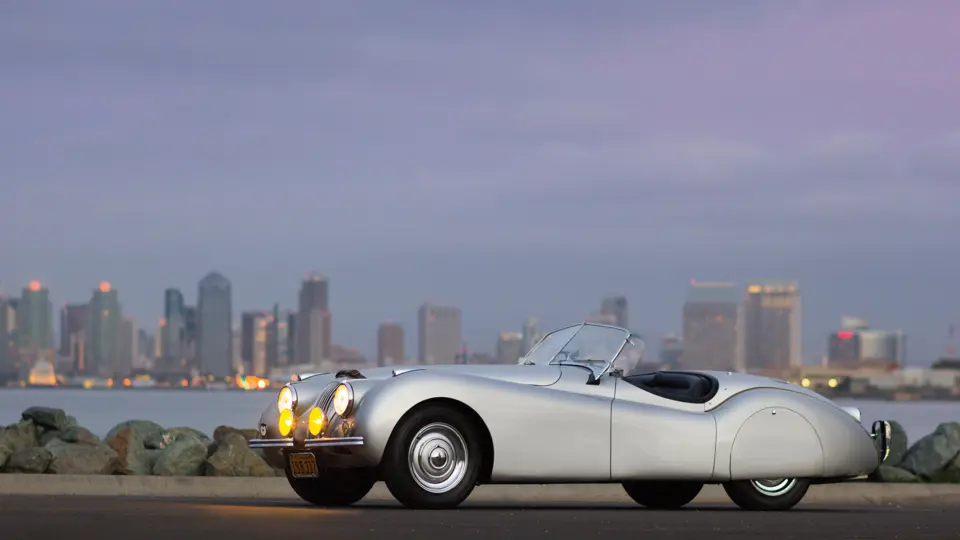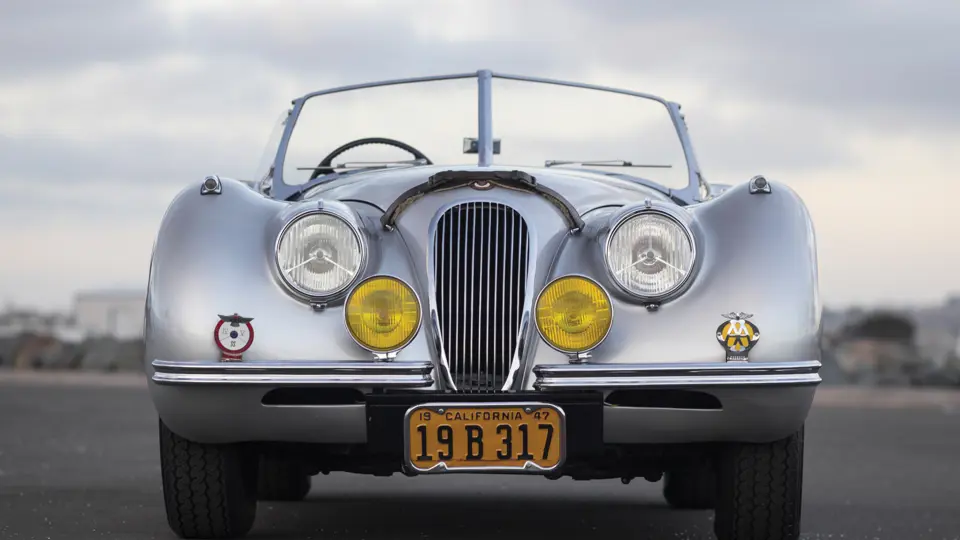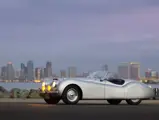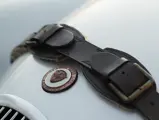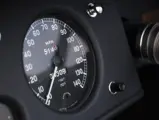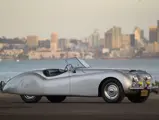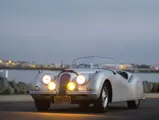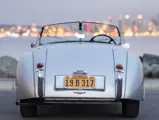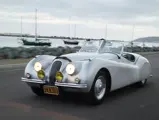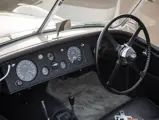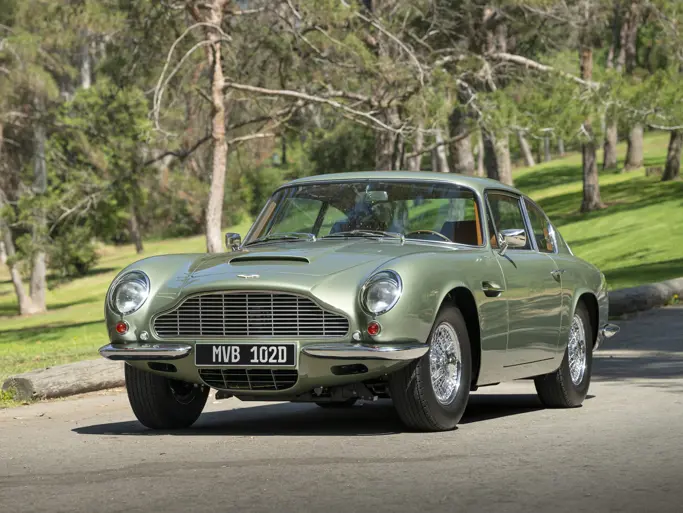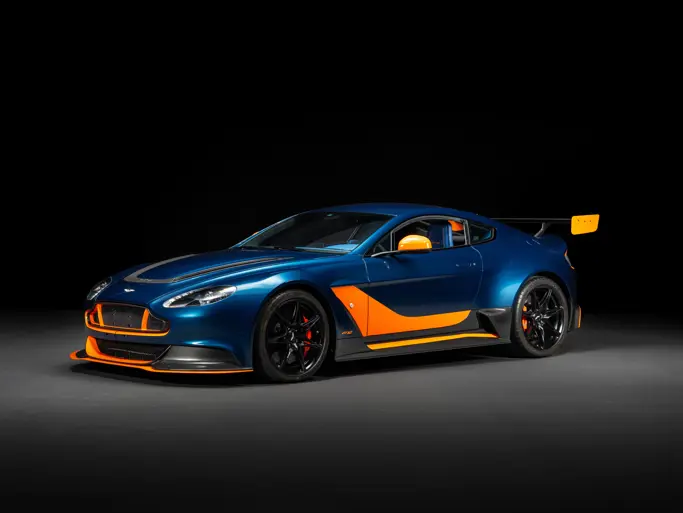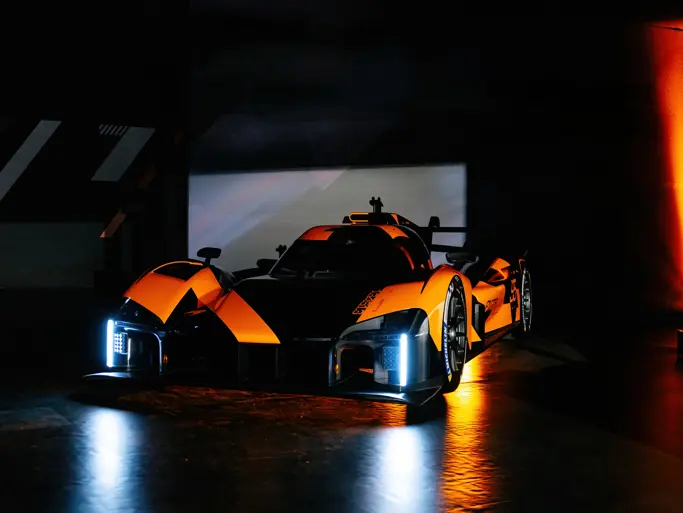
1949 Jaguar XK 120 Alloy Roadster
{{lr.item.text}}
$495,000 USD | Sold
{{bidding.lot.reserveStatusFormatted}}
- Offered from the estate of Charles “Chuck” Swimmer
- The most desirable XK120 variant; one of 184 left-hand drive alloys built
- Matching numbers
- Documented by its Jaguar Daimler Heritage Trust Certificate
- A two-time Colorado Grand and California Mille veteran
160 bhp, 3,442 cc DOHC inline six-cylinder engine with twin SU H6 carburetors, four-speed manual transmission, independent front and live rear axles with semi-elliptic spring rear suspension, and four-wheel drum brakes. Wheelbase: 102 in.
While most contemporary observers of the Jaguar XK120 would be certain that it was born for greatness, it is surprising to consider that it was conceived and born as a limited-edition stopgap model. William Lyons assumed that the post-WWII fortune of his company, the recently re-named Jaguar Cars Ltd., would be made on the saloon cars that would sell so well in export markets, especially in the U.S. To that end, a new dual overhead-cam, six-cylinder, 160 horsepower engine was developed to power a new luxury sports four-door.
As the new car was not yet ready, it was decided to launch the engine in a limited run of alloy-bodied roadsters. When shown at the 1948 Earl’s Court Motor Show, it created a sensation. Following a speed run on a Belgian highway in 1949, in which an XK120 ran 126 mph with its windshield on and 132 mph without, there was no doubt that this would become a regular production model. After 240 alloy cars were built, production was shifted to more easily manageable steel, which was now more widely available following post-war material shortages.
The car offered here, chassis number 670061, was the 61st Alloy Roadster built, and it is one of one hundred eight-four delivered with left-hand drive. It is believed to have been originally owned by Roger Thomas, of Connecticut, and it was later converted to right-hand drive, in keeping with its sporting British origins, and refinished in beautiful silver with blue leather, as it appears today.
Mr. Swimmer acquired the Jaguar around 2005, from his friend Don Williams, of the Blackhawk Collection. Mr. Williams related that he purchased this car as part of a package of cars from England, where he believed it to have remained for some time with its then-owner. When Mr. Swimmer acquired the car, it did not have rear-wheel spats, nor did it run particularly well. It was immediately sent to JCNA senior judge and restorer Jack Rabell, who added the spats, rebuilt the carburetors, went through the ignition system and the electronics, sorted the ignition, put a new coil and points in the car, and generally ensured that it would run perfectly.
This has been one of the longest-term residents of Mr. Swimmer’s collection, as well as his most driven car. He reported that it ran beautifully up to 115 mph, the highest speed to which he was willing to take it. It was well known as an excellent competitor during its two runs in the Colorado Grand and its completion of the California Mille; together, these runs represent some 3,000 miles of high-performance touring. Throughout its rally career, it was intermittently shown, and in 2007, at the local San Diego Concours, the XK120 was inspected by JCNA judges and restorers Jack Rabell and Tom Krefetz. They both deemed the car to be very correct and authentic, with matching numbers; however, there were some minor details that were not entirely precise. Subsequently, the car was sent back to Mr. Rabell’s workshop to have those minor details fixed, such as having the proper type hoses and hose clamps added; the correct-fitting interior added; minor paint work conducted on the rear deck lid, which was fixed where the top was not closing properly; and a light mechanical service performed. Mr. Rabell said that this car now runs and drives incredibly well, and it always performs as it should.
Importantly, the vehicle retains its original tool set, as well as a set of full disc wheel covers and rear fender spats. The wheels are shod in Verdestain radial tires, improving the car’s road manners for the long rallies that Mr. Swimmer so enjoyed. Furthermore, should the next owner decide to convert this example back to its original LHD configuration, this is a very simple conversion, and estimates to do this by a marque specialists are below $5,000. With the value of most low-production European sports classics soaring, these cars represent incredible value and collectability, and they certainly tick all of the boxes: open, two-seat, European sports car, stunning good looks, and very limited production numbers.
Chuck Swimmer loved automobiles, few more so than this regularly exercised alloy XK120, which is being offered here to a new owner, who will, undoubtedly, enjoy it as he did.





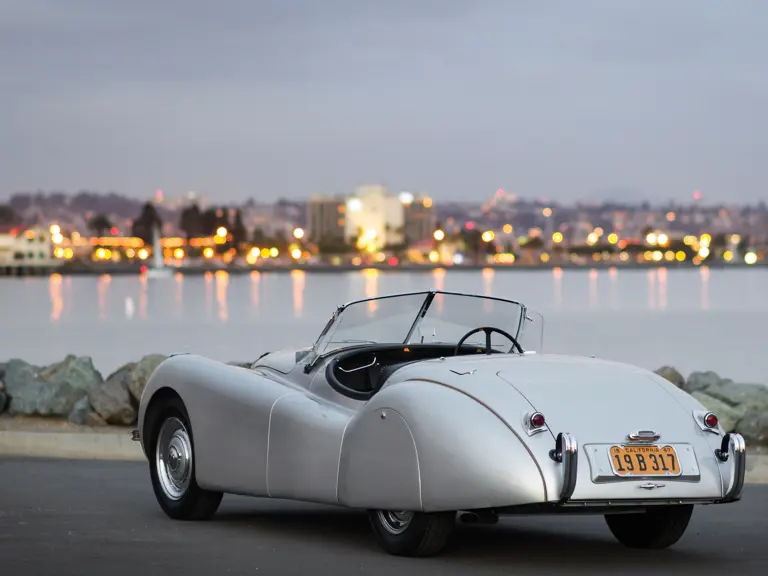
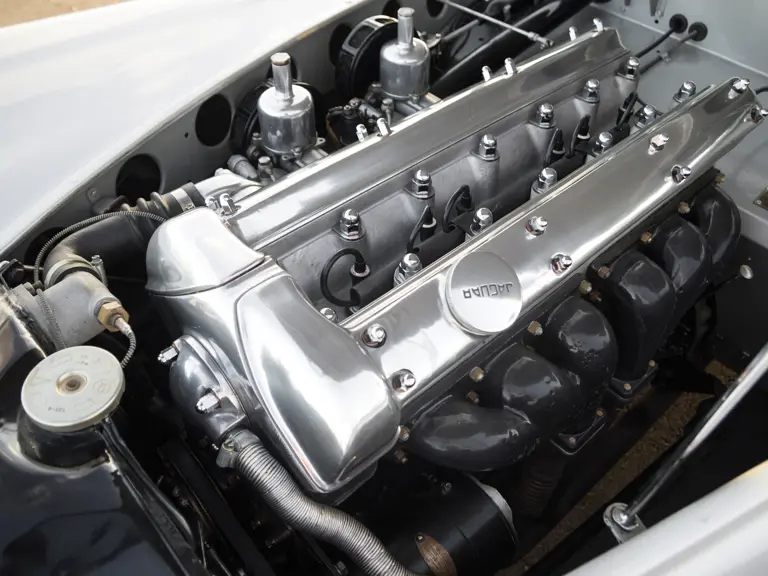

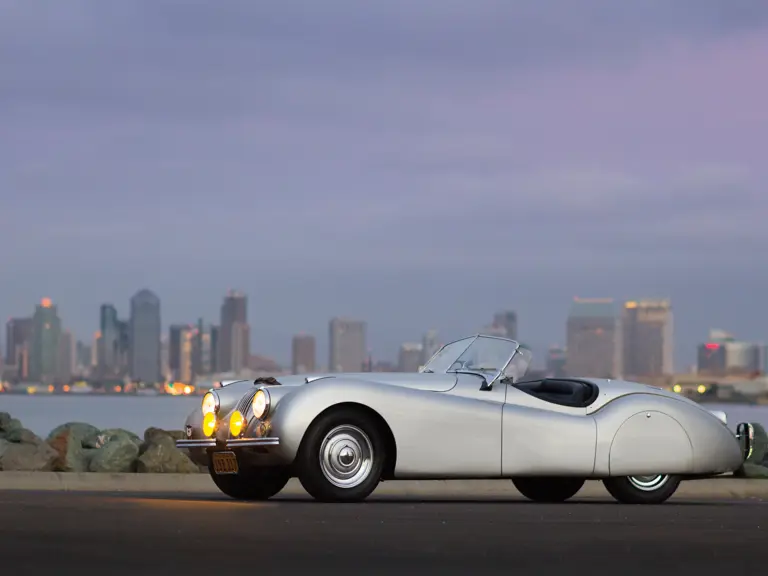

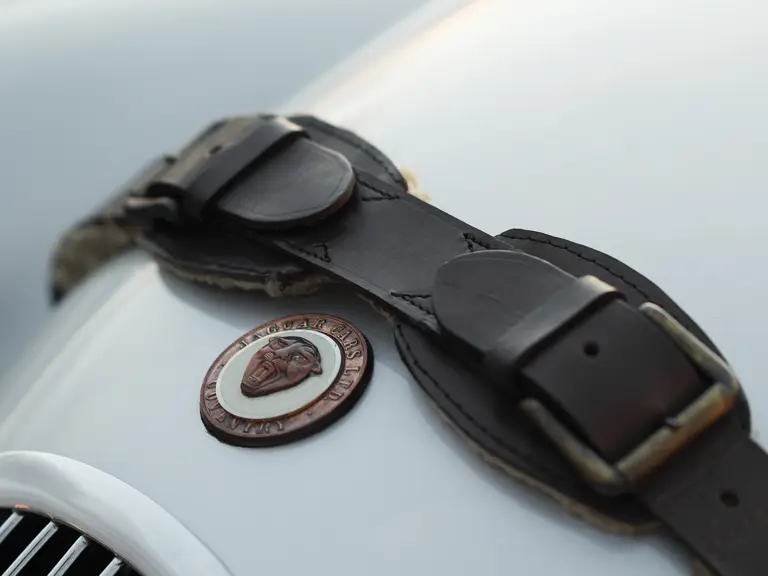

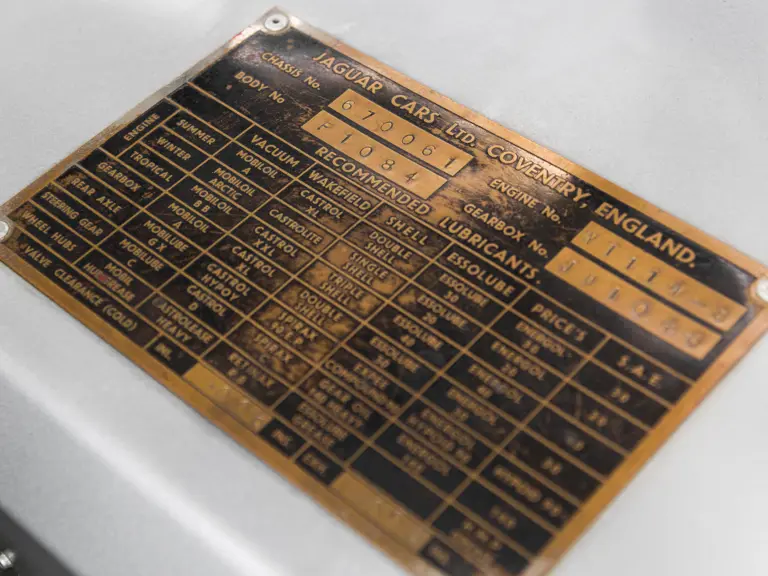
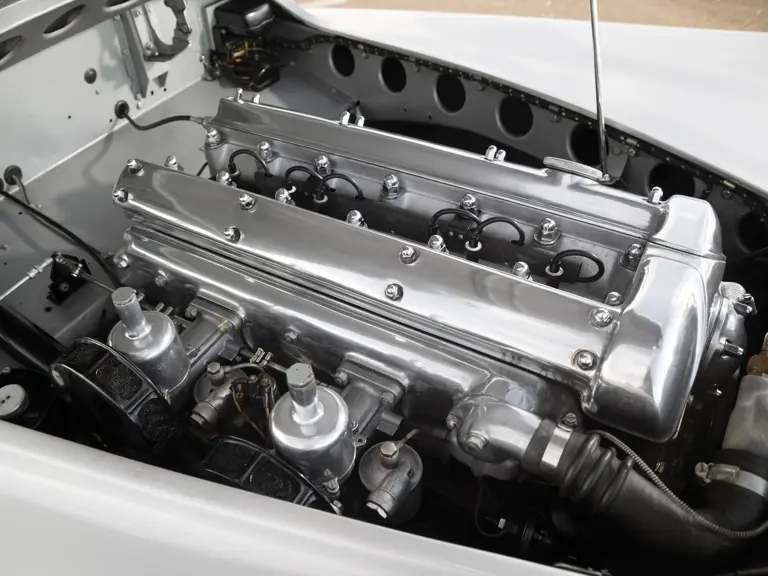


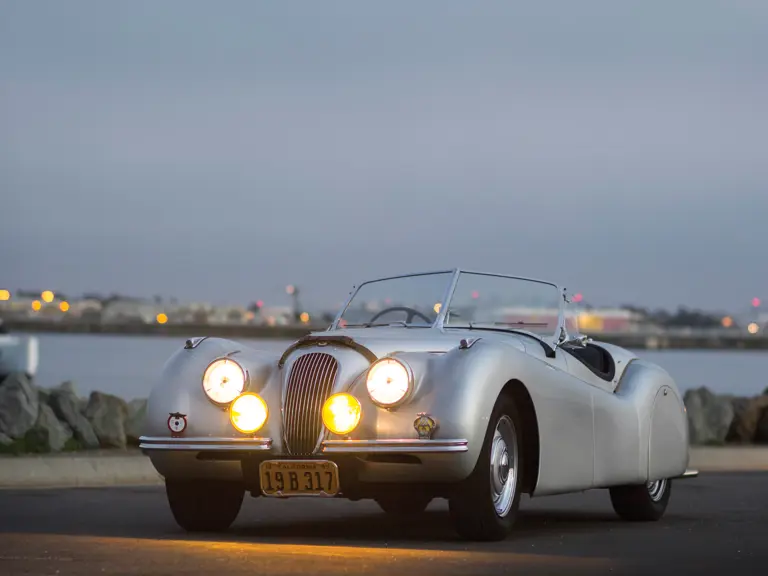
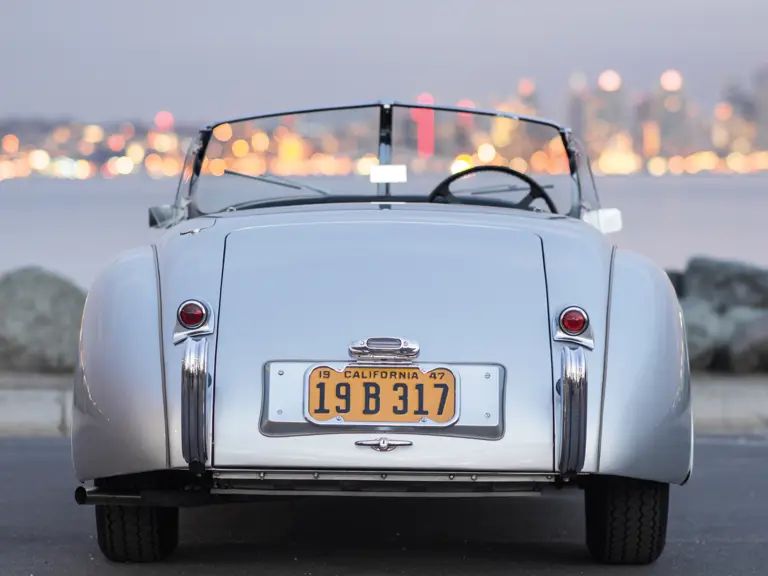
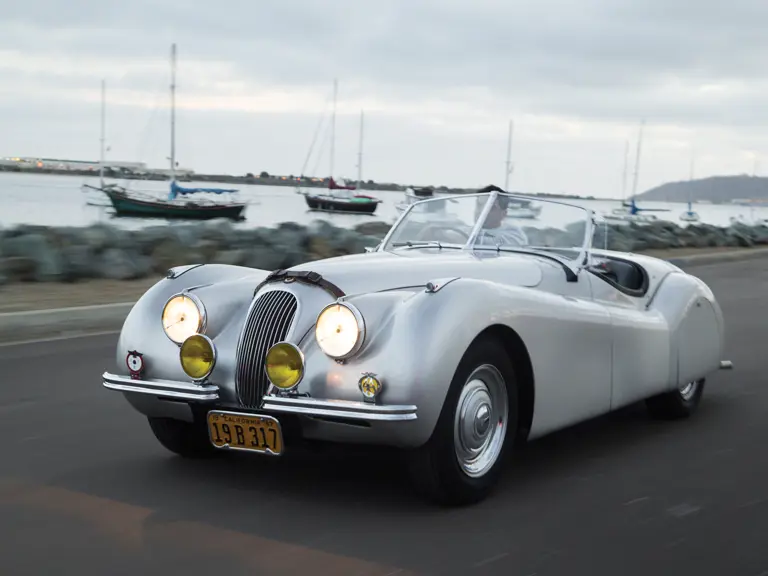

 | Amelia Island, Florida
| Amelia Island, Florida
